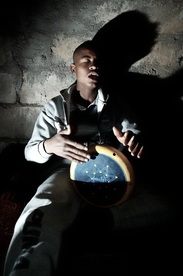This has been coming up a lot in my world lately, both personally and professionally.
It’s one of the biggest challenges that I see when working with couples. Each person tries prove that they aren’t the one at fault in a situation. It ends up skyrocketing arguments, leaving both parties hurt and at an impasse.
It’s coming up in the #MeToo movement. Many men are anxious to prove that they aren’t part of the problem of harassment, assault, and the unequal treatment of women.
I see it at workplaces. If something hasn’t been accomplished in a timely manner, or something has gone wrong, everyone jumps to their explanation of why it wasn’t their responsibility, or states that it was because someone else hadn’t done their part first.
Honestly, I struggle with it too. In relationships, at work, in the context of larger social issues, the need to say and prove that “it’s not my fault” or “I’m not that person” is strong. It takes over more often than I would like it too.
So why is that there? What makes it so strong?
Like any protective action we take, this is based on a fear response. We feel attacked. We are afraid of what might happen next. We are afraid of how we will viewed, or what consequences we might experience. The potential of being rejected is painful. Even allowing room for that fear is so uncomfortable that we do what we can to quickly get rid of it.
And yes, we want to be understood for who we are. We feel a need to prove it. These are such human and natural feelings, but almost always lead to damaging results when it comes through the fear route. Arguments occur, situations aren’t solved, and sometimes others are blamed or attacked (verbally or physically). This leaves no room for growth and change.
What can we do about it?
1. First step? Notice. When you feel that urge to defend yourself coming up, notice that it's there. Even name it. Ask what it is you are afraid of. Is it that you will get fired? Is it that someone you love will think poorly of you?
2. Learn to live with the discomfort. Fear, anxiety, hurt, anger… whatever comes up for you when you are confronted with something that is unsettling, don’t rush to get rid of it. Use some self-soothing techniques. Give yourself some compassion. Examine the size of the fear as it relates to the reality of the situation.
3. Get more information from the person or people challenging you. Let the person sharing their experience know that you hear and understand what they are saying. This isn’t taking responsibility for what they are saying, or affirming that they are 100% right in what they are bringing up. It just lets them know that you are making space and really working to understand (You would be AMAZED at how quickly this part alone with de-escalate an emotionally charged situation).
4. Do take responsibility for any part you may have contributed to the problem. It may be minimal. It may be huge. It may have been accidental. Whatever it is, even though it’s uncomfortable and may be scary, own it.
5. Share your perspective on other things that contributed to the situation. Look at it as a problem to be solved, not as defect in you or the other people involved. You can and should share your feelings about everything, too. They are important! One of the kindest things you can do for yourself is to make space to communicate your feelings and needs when fear isn’t in the driver's seat.
Taking a break from defensiveness can significantly improve your relationships and interactions. It's something that requires regular work and patience with yourself, but the payoff will be worth it.
It’s one of the biggest challenges that I see when working with couples. Each person tries prove that they aren’t the one at fault in a situation. It ends up skyrocketing arguments, leaving both parties hurt and at an impasse.
It’s coming up in the #MeToo movement. Many men are anxious to prove that they aren’t part of the problem of harassment, assault, and the unequal treatment of women.
I see it at workplaces. If something hasn’t been accomplished in a timely manner, or something has gone wrong, everyone jumps to their explanation of why it wasn’t their responsibility, or states that it was because someone else hadn’t done their part first.
Honestly, I struggle with it too. In relationships, at work, in the context of larger social issues, the need to say and prove that “it’s not my fault” or “I’m not that person” is strong. It takes over more often than I would like it too.
So why is that there? What makes it so strong?
Like any protective action we take, this is based on a fear response. We feel attacked. We are afraid of what might happen next. We are afraid of how we will viewed, or what consequences we might experience. The potential of being rejected is painful. Even allowing room for that fear is so uncomfortable that we do what we can to quickly get rid of it.
And yes, we want to be understood for who we are. We feel a need to prove it. These are such human and natural feelings, but almost always lead to damaging results when it comes through the fear route. Arguments occur, situations aren’t solved, and sometimes others are blamed or attacked (verbally or physically). This leaves no room for growth and change.
What can we do about it?
1. First step? Notice. When you feel that urge to defend yourself coming up, notice that it's there. Even name it. Ask what it is you are afraid of. Is it that you will get fired? Is it that someone you love will think poorly of you?
2. Learn to live with the discomfort. Fear, anxiety, hurt, anger… whatever comes up for you when you are confronted with something that is unsettling, don’t rush to get rid of it. Use some self-soothing techniques. Give yourself some compassion. Examine the size of the fear as it relates to the reality of the situation.
3. Get more information from the person or people challenging you. Let the person sharing their experience know that you hear and understand what they are saying. This isn’t taking responsibility for what they are saying, or affirming that they are 100% right in what they are bringing up. It just lets them know that you are making space and really working to understand (You would be AMAZED at how quickly this part alone with de-escalate an emotionally charged situation).
4. Do take responsibility for any part you may have contributed to the problem. It may be minimal. It may be huge. It may have been accidental. Whatever it is, even though it’s uncomfortable and may be scary, own it.
5. Share your perspective on other things that contributed to the situation. Look at it as a problem to be solved, not as defect in you or the other people involved. You can and should share your feelings about everything, too. They are important! One of the kindest things you can do for yourself is to make space to communicate your feelings and needs when fear isn’t in the driver's seat.
Taking a break from defensiveness can significantly improve your relationships and interactions. It's something that requires regular work and patience with yourself, but the payoff will be worth it.
1 Comment







 RSS Feed
RSS Feed
